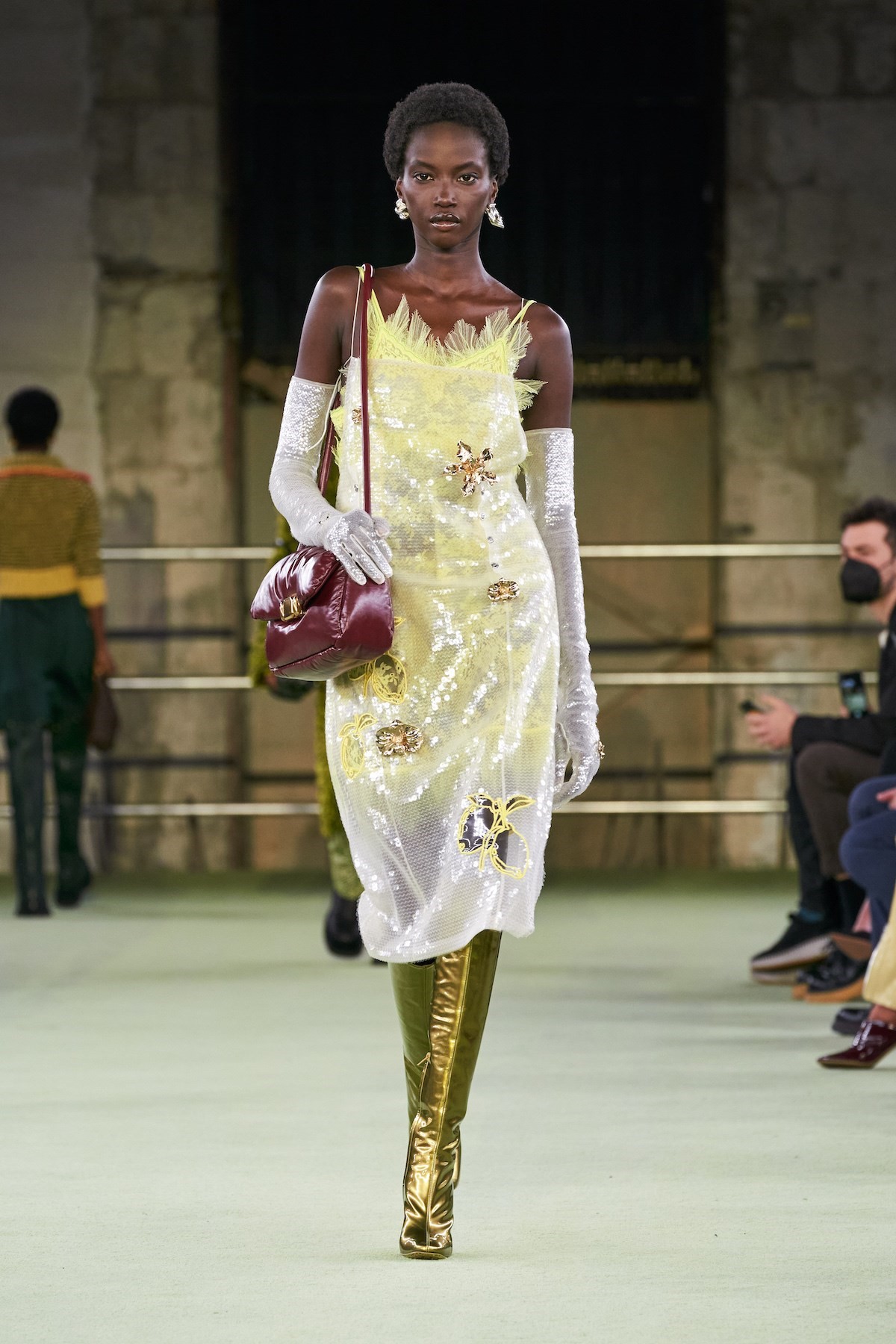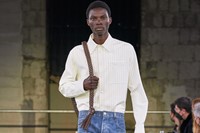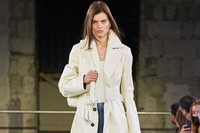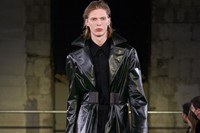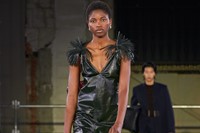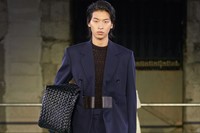For his Bottega Veneta debut, Matthieu Blazy chose to show in the heart of what will become the company’s new Milanese headquarters, the Palazzo San Fedele. It was still kind of a building site, a work in progress, a historical site being renovated, from the inside out. Enough metaphors for you? Blazy was a second-in-command at Bottega until last November when he was appointed creative director – he worked at Celine, Maison Margiela and Calvin Klein with Raf Simons before that, and was better known than most “number twos” in the industry. But still, he was an unexpected appointment.
His Bottega Veneta debut may have taken place around scaffolding, with an audience perched on cubes of crushed metal (maybe garbage? I wasn’t sure), but it didn’t feel like it was half-finished. Rather it was a succinct, precise and engaging collection, skewering an idea of what people will want to wear right now – multiple ideas, in fact.
There was plenty of Blazy’s own history there – references to things he’s done in prior roles, reflections of his aesthetic, now on his own terms and under his own name. Well, sort of – Bottega Veneta is an existing luxury house, but its history is hazy, bar its intricate hand-woven leather, the intrecciato. Woven from strips of leather, it uses double the skin (hence is pricey) but gives the resultant pieces a pliability that resembles fabric. It also allows magically seamless pieces, which Blazy fully exploited in accessories, handbags and thigh-high boots that became almost like a second skin under clothes: but Blazy also pulled it apart, into swaying underskirts of fringe that rustled ferociously beneath leather dirndls.
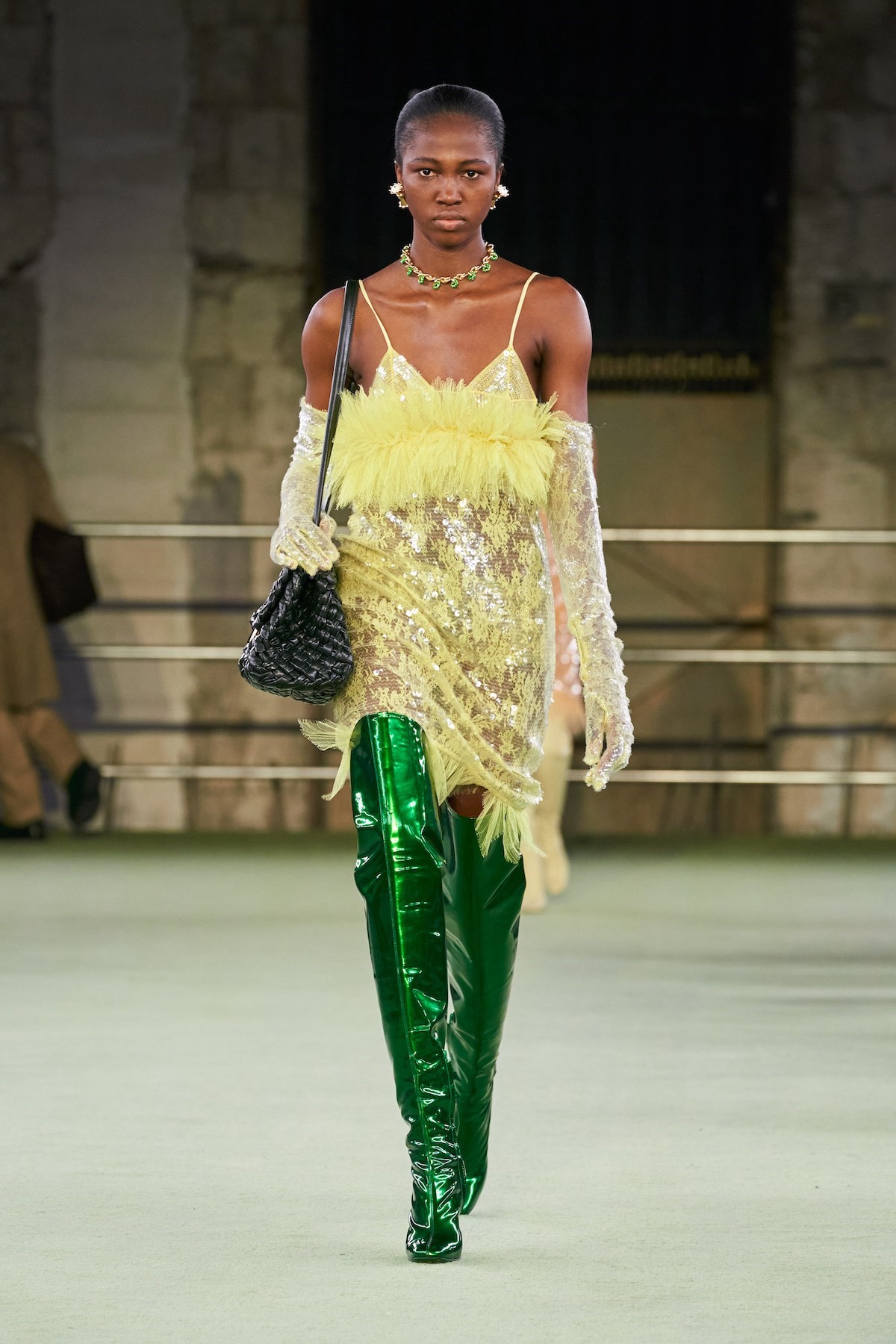
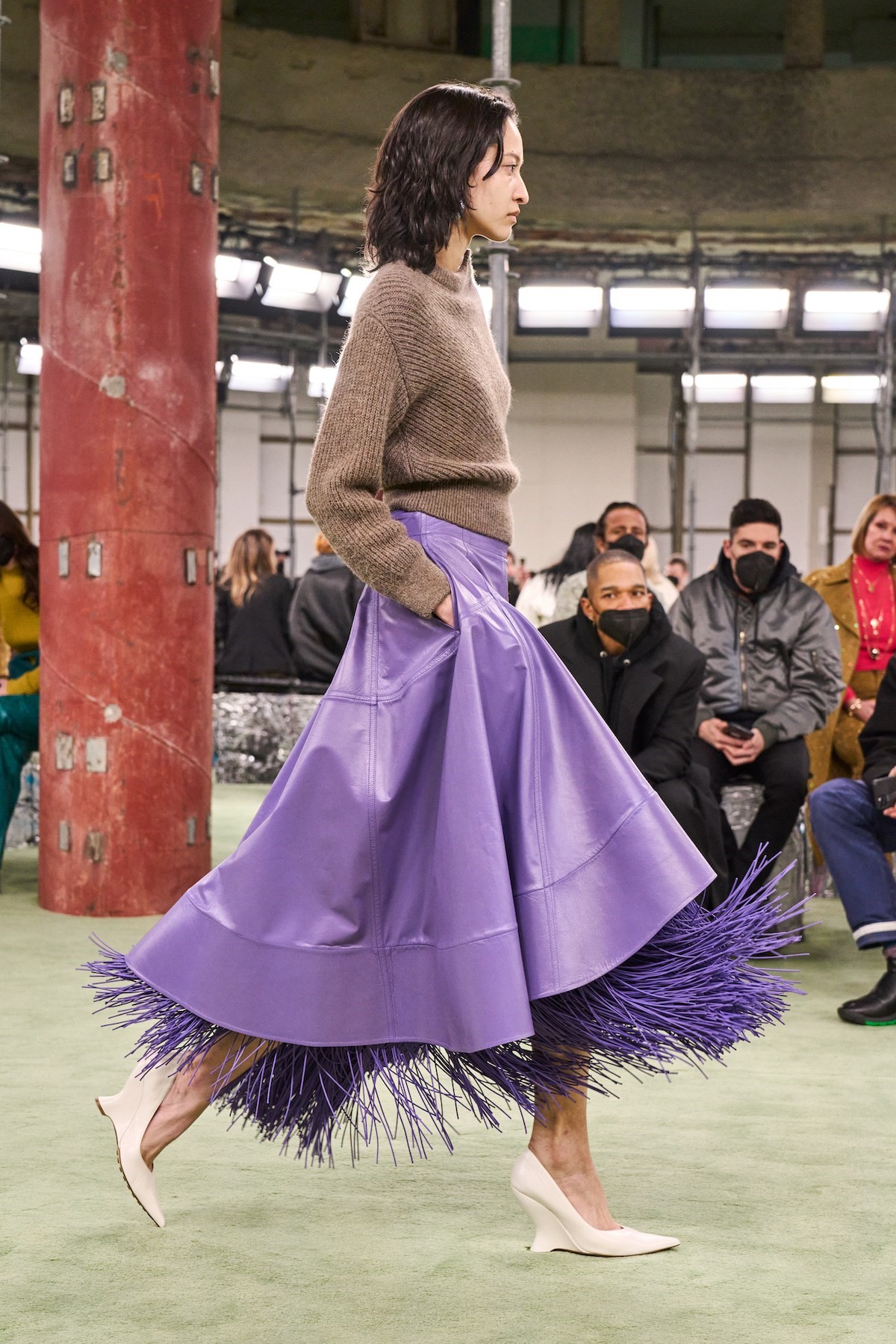
A reference, he said backstage, was “luxury in motion,” citing a 1913 sculpture by Umberto Boccioni, Unique Forms of Continuity in Space, as an inspiration. That figure, blurred and swirling as if captured in abstract motion, was evoked through those rustling layers, but also through curvilinear lines, cocoon-backed cabin coats and angular flared trousers cropped short above heavy platform boots. They had a dynamic, urgent energy.
There were subtler nods to Bottega’s heritage, imaginary but compelling and relevant: Bottega Veneta literally translates as ‘Venetian shop’, it was founded in Vicenza in 1966. The most famous Venetian fashion designer is Mariano Fortuny, who created pleated dresses in the 1900s – around the same time Boccioni crafted his bronze – which seem breathtakingly modern today. Elastic, crease free, able to be knotted for travel and worn without cumbersome padding or corsets, they were the sportswear of their time – and subsequently inspired Issey Miyake’s best-selling ‘Pleats Please’ range. Blazy nodded to them with pleated skirts weighed with beads (a Fortuny device, to hold down the lightweight fabric and pull it against the body). They were worn with sweaters based on Blazy’s own childhood knits.
The overall takeaway was the focus on the actuality of clothes – garments you wanted to take, try, live in, love. Blazy’s anchoring of Bottega Veneta in life. And that includes, honestly, building-sites, renovations, reworking. Life is never static. Clothes shouldn’t be either.
